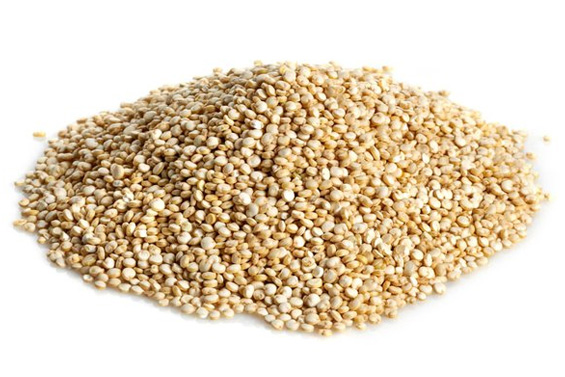
|
Product: Quinoa
|
|
|
Basic Information: Quinoa or quinoa was a sacred food for the Incas and Aztecs and today it is considered a “superfood.” In the field of nutrition, quinoa is considered a pseudocereal. It has a higher protein content than cereals and also of higher biological quality (that is, its amino acid content is very balanced with respect to the amount of amino acids that our body needs to synthesize its own proteins). It is rich in minerals and vitamins (especially group B), its digestion is very light and it does not contain gluten, so celiacs can eat it. Although there are more than 3,000 varieties of quinoa, less than 1% is currently used. Due to its nutrient-rich composition, it is considered a very complete food. It has been included by NASA in the diets of astronauts for long-term space trips. Furthermore, being a cereal, it has the property of absorbing water and remaining in the stomach longer. It comes from the Andean region that extends through Chile, Peru, Bolivia, Ecuador and reaches Colombia. The plant began to be cultivated in this area of the world 3000-4000 years ago for human consumption. The name derives from the indigenous word, kinuwa, -in Quechua- the indigenous language of the Andean region. It was assimilated into the Spanish language by a phonetic transcription. |
|
|
Origin:
|
Region: Janín, Cuzco, Apurimac, Puno, Arequipa, Ayachucho, Huancavelina
|
|
Seasonality:
Jan
Feb
Mar
Apr
May
Jun
Jul
Aug
Sep
Oct
Nov
Dec
|
|
|
Certifications: USDA Organic, JAS, RTPO Peru, Kosher
|
Available presentations: Flakes, Whole, Powder, Gelatinized Powder, Sterilized.
|
|
Suggested Industrial Applications: Food industry: children's food, meat products, sausages, fisheries, prepared products, baking, confectionery, pastry, cereals, desserts, dairy products, ice cream, fitness nutrition, dietary supplements, healthy snacks, beverages.
|
|
|
Uses: Primary or secondary food input.
|
|
|
Properties: White quinoa, also known as golden quinoa, is the most recognized and the most marketed. In addition, there are red, black, orange, and even purple quinoa. There is not much difference between them in terms of nutritional properties but each one has its characteristic flavor and texture. White Quinoa: White quinoa has the most delicate flavor and thanks to its light texture it is fluffier once cooked. Perhaps it is the most versatile variety, delicious as a base for salads, replacing rice in our dishes or giving consistency to pancakes. Red Quinoa: Compared to white, red quinoa provides a little more protein and is also richer in riboflavin. Cooked, this variety has a brownish color and a comparatively more intense flavor than the white variety, with a stronger touch of nuts. It combines very well in salads, especially those that contain fruits or nuts. It requires approximately 3-4 minutes of cooking more than the white one. Black Quinoa: Black quinoa stands out for its contrast of earthy flavor along with a subtle sweet touch. This variety is tasty in oat porridge because its crunchy texture contrasts with the creamy oats - in addition to being aesthetically striking! It requires approximately 5-6 minutes more cooking than the white one. |
|
| Main Functionality: Quinoa provides proteins, unsaturated fatty acids, minerals (calcium, iron and magnesium), vitamins (E, B1, B2 and niacin) and phosphorus. Its high content of total dietary fiber (7 grams per 100 grams of raw quinoa) produces a feeling of satiety. | |
|
Secondary Functionality: -
|
|
| Components / Components | Per 100g / Per 100g |
Number of determinations / Number of determinations |
Range / Range |
| Calories / Calories | - | ||
| Moisture / Moisture | 12.65% |
58 |
20.7 - 6.8% |
| Carbohydrates / Carbohydrates | 59.74 | 50 | 71.3 - 36.72 |
| Proteins / Proteins | 13.81 | 77 | 22.08 - 7.47 |
| Total fat / Total fat | 5.01 | 60 | 9.3 - 1.8 |
| Fiber / Fiber | 4.14 g | 30 | 16.32 - 1.10 |
| Ash / Ash | 3.36 g | ||
| Cellulose / Cellulose | 4.38 | 22 | 12.20 - 1.5 |
| Phosphorus / Phosphorus | - | - | - |
| Iron / Iron | - | - | - |
| Thiamine / Thiamine | - | - | - |
| Riboflavin / Riboflavin | - | - | - |
| Niacin / Niacin | - | - | - |
| Ascorbic acid / Ascorbic acid | - | - | - |